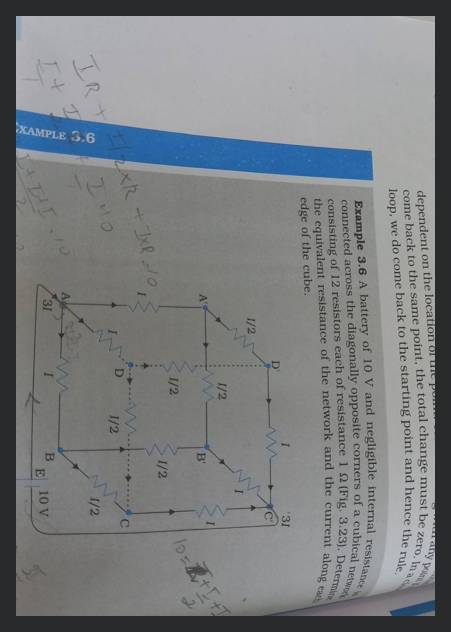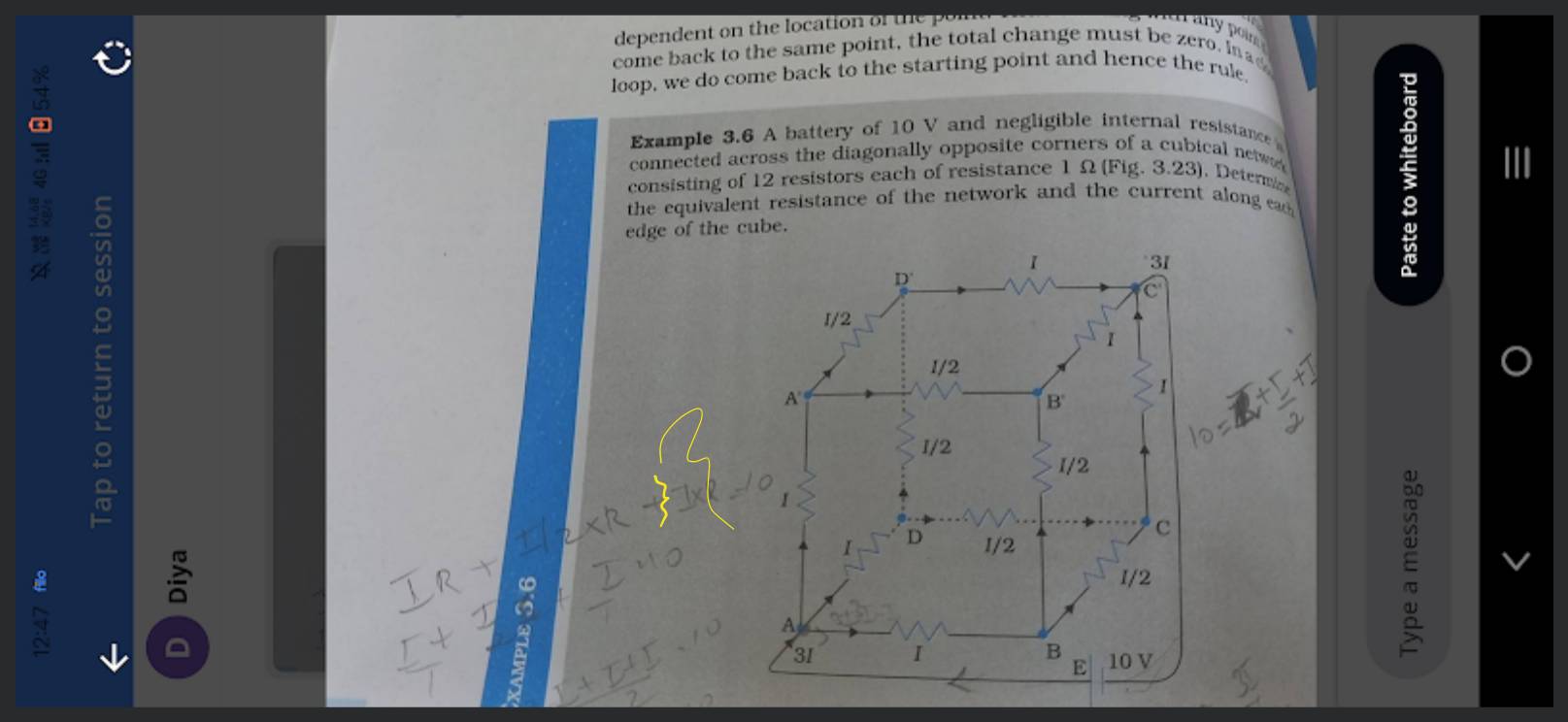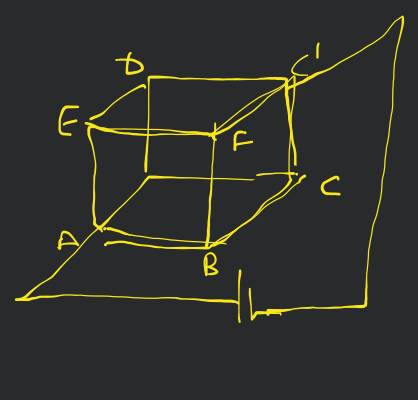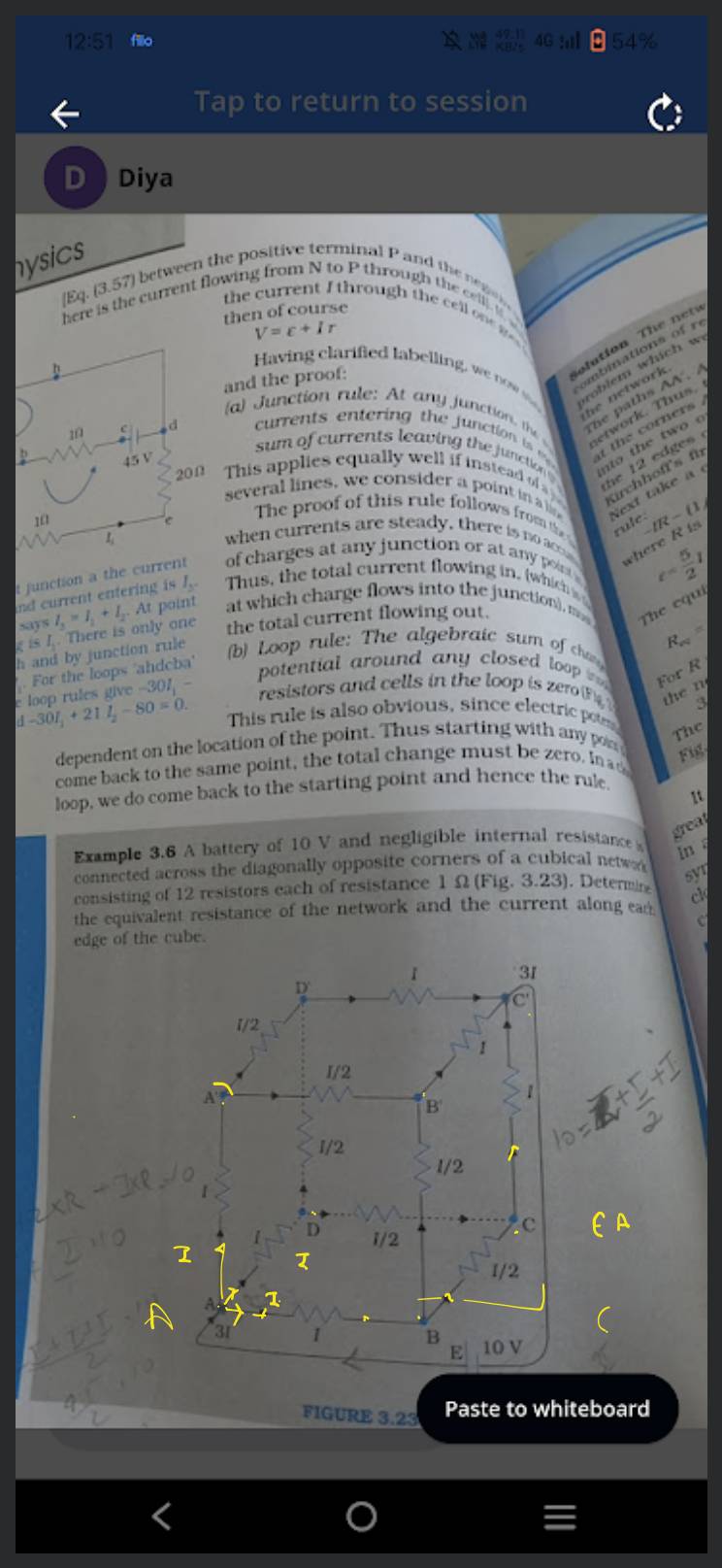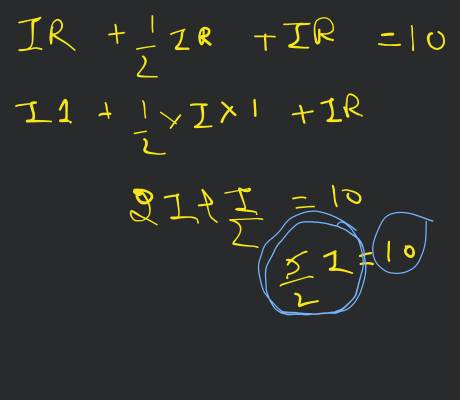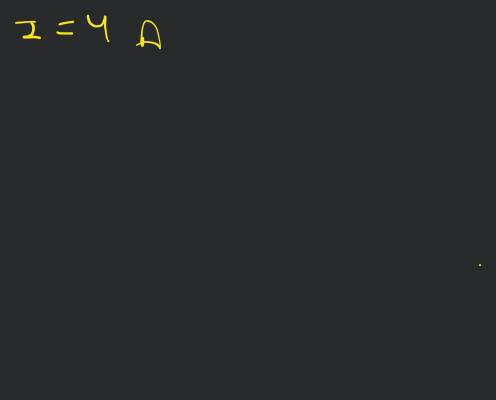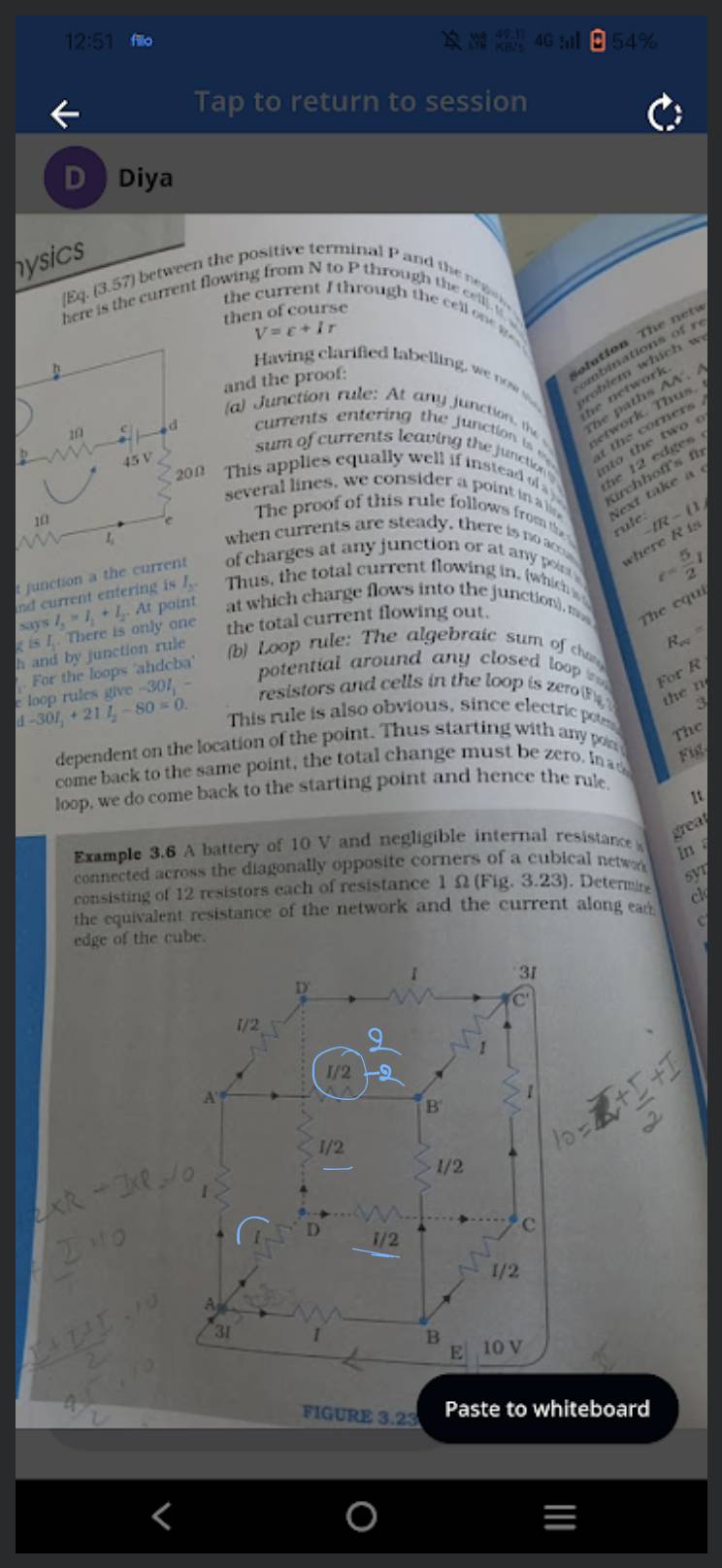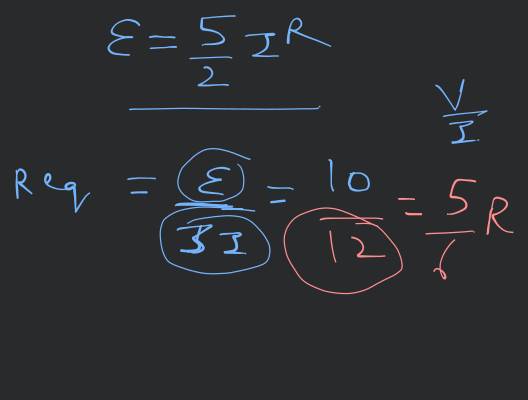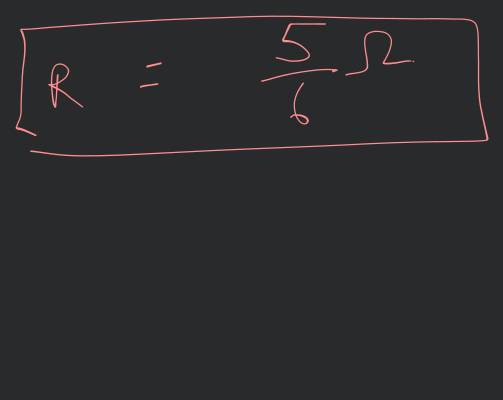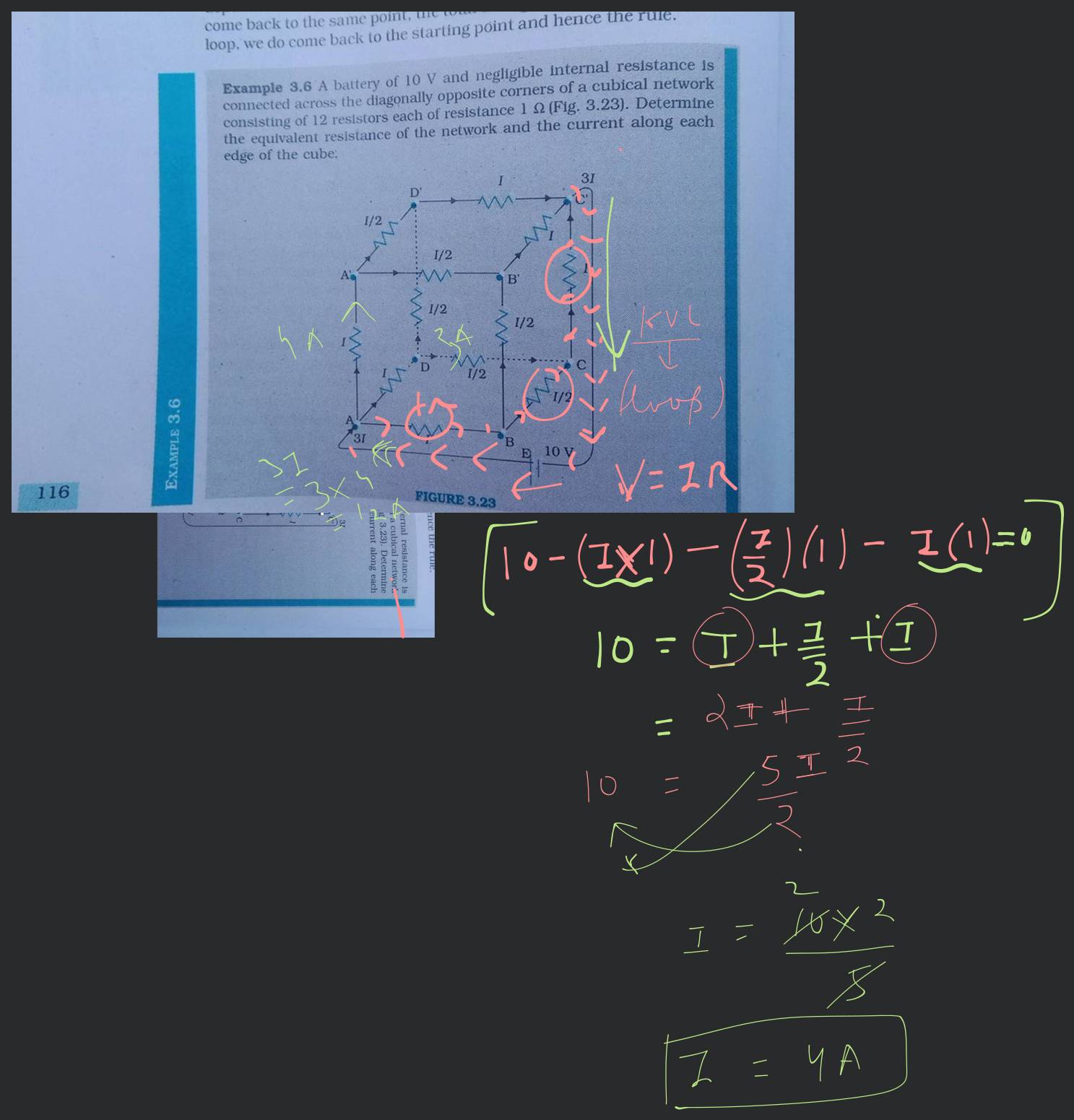Question
Medium
Solving time: 3 mins
A battery of and negligible internal resistance is connected across the diagonally opposite corners of a cubical network consisting of 12 resistors each of resistance (Fig.). Determine the equivalent resistance of the network and the current along each edge of the cube.
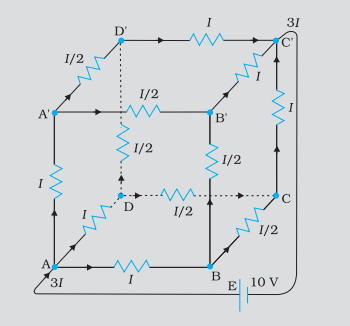
Found 5 tutors discussing this question
Discuss this question LIVE
6 mins ago
 Text solution
Text solution Verified
Verified
The network is not reducible to a simple series and parallel combinations of resistors. There is, however, a clear symmetry in the problem which we can exploit to obtain the equivalent resistance of the network.
The paths and are obviously symmetrically placed in the network. Thus, the current in each must be the same, say, . Further, at the corners and , the incoming current must split equally into the two outgoing branches. In this manner, the current in all the 12 edges of the cube are easily written down in terms of , using Kirchhoff's first rule and the symmetry in the problem.
Next take a closed loop, say, ABCC'EA, and apply Kirchhoff's second rule:
where is the resistance of each edge and the emf of battery. Thus,
The equivalent resistance of the network is
For and for , the total current in the network is
The current flowing in each edge can now be read off from the Figure.
Was this solution helpful?
59
Share
Report
Filo tutor solutions (10)
Learn from their 1-to-1 discussion with Filo tutors.
12 mins
Uploaded on: 5/26/2023
Was this solution helpful?
122
Share
Report
5 mins
Uploaded on: 3/12/2023
Was this solution helpful?
142
Share
Report

One destination to cover all your homework and assignment needs
Learn Practice Revision Succeed

Instant 1:1 help, 24x7
60, 000+ Expert tutors

Textbook solutions
Big idea maths, McGraw-Hill Education etc

Essay review
Get expert feedback on your essay

Schedule classes
High dosage tutoring from Dedicated 3 experts
Practice more questions from Physics Part-I (NCERT)
Q1
A network of resistors is connected to a battery with internal resistance of , as shown in Fig. 3.19: (a) Compute the equivalent resistance of the network. (b) Obtain the current in each resistor. (c) Obtain the voltage drops and
Q2
A battery of and negligible internal resistance is connected across the diagonally opposite corners of a cubical network consisting of 12 resistors each of resistance (Fig.). Determine the equivalent resistance of the network and the current along each edge of the cube.
Q3
The four arms of a Wheatstone bridge (Figure) have the following resistances:
A galvanometer of resistance is connected across BD. Calculate the current through the galvanometer when a potential difference of is maintained across .
View allA galvanometer of resistance is connected across BD. Calculate the current through the galvanometer when a potential difference of is maintained across .
Practice questions from Physics Part-I (NCERT)
Question 1
Easy
Views: 6,375
Question 2
Medium
Views: 5,768
Question 3
Medium
Views: 6,252
Question 4
Medium
Views: 6,295
(a) A steady current flows in a metallic conductor of non-uniform cross-section. Which of these quantities is constant along the conductor: current, current density, electric field, drift speed?
(b) Is Ohms law universally applicable for all conducting elements?If not, give examples of elements which do not obey Ohms law.
(c) A low voltage supply from which one needs high currents must have very low internal resistance. Why?
(d) A high tension (HT) supply of, say, 6 kV must have a very large internal resistance. Why?
Practice more questions from Current Electricity
Question 1
Easy
Views: 5,735
Question 2
Easy
Views: 5,923
Practice questions on similar concepts asked by Filo students
Question 1
Views: 5,280
Question 2
Views: 5,442
Question 3
Views: 5,090
Question 4
Views: 5,313


Stuck on the question or explanation?
Connect with our Physics tutors online and get step by step solution of this question.
231 students are taking LIVE classes
| Question Text | A battery of and negligible internal resistance is connected across the diagonally opposite corners of a cubical network consisting of 12 resistors each of resistance (Fig.). Determine the equivalent resistance of the network and the current along each edge of the cube. |
| Updated On | Feb 22, 2024 |
| Topic | Current Electricity |
| Subject | Physics |
| Class | Class 12 |
| Answer Type | Text solution:1 Video solution: 10 |
| Upvotes | 1043 |
| Avg. Video Duration | 10 min |



